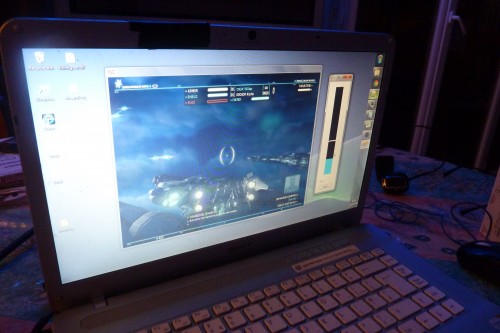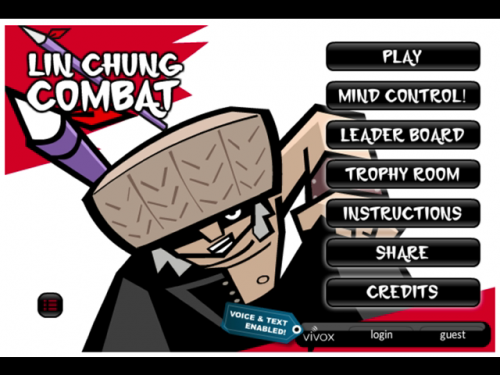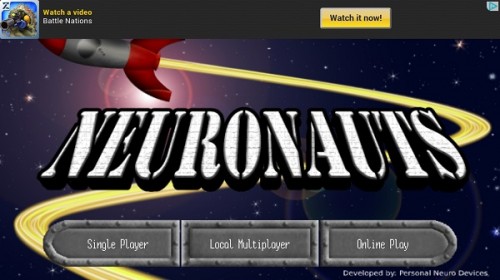Recently I’ve been writing Java classes to manage NeuroSky’s native packet format for an Android deployment. The packet format is more unusual than those of other sensors I’ve programmed for (e.g. Nexus, Biosemi, Affectiva, BioHarness). The packet format has clearly been designed to be future proof with its use of a variable length payload and infinite descriptors. Continue reading “Doctor Who – Blink”
Category: Biofeedback
BioFear – A biofeedback mod for L4D2
Needed a break from job hunting, so decided to record some video of a biofeedback mod I wrote a few weeks back for Left 4 Dead 2. Ideally I wanted to record another mod I developed while at LJMU, but iPad’s are a little more tricky to work with.
Continue reading “BioFear – A biofeedback mod for L4D2”
Understanding MyndPlay's Zone measure
I’ve been trying out MyndPlay, a video-based neurofeedback training platform which embeds neurofeedback exercises into interactive movies. Think Dragon’s Lair but your using your mind instead of a joystick. Of all the NeuroSky apps I’ve tried its my favorite so far, owing a lot to it feeling like an actual product rather than a tech demo. The user interface is slick and provides all the necessary information one would expect from such a product e.g. a live EEG signal.
Continue reading “Understanding MyndPlay's Zone measure”
Strike Suit Neuro – Video
Video of a neurofeedback game mechanic I’ve been working on for Strike Suit Zero.
Need to spend some time developing a calibration procedure for the measure I use but otherwise a serviceable mechanic. And perhaps spend some time practicing with the keyboard flight controls, I’m a terrible pilot!
Strike Suit Neuro

Prototyping an idea I had earlier today on brainwave triggered special abilities (see Lin Chung Combat post for background). Fine tuning the mechanic is bloody difficult when your sleep deprived.
Playing Lin Chung Combat

Lin Chung Combat is a Flash based BCI game developed by Moonscoop*. Lin Chung Combat is a rhythm game, similar in style to Dance Dance Revolution, which incorporates a neurofeedback game mechanic. Players are tasked with pressing certain arrow keys when they scroll over the horizontal black bar at the top of the game interface. Points are awarded when the player presses keys at the correct time and energy is lost when they don’t. The neurofeedback element takes the form of a special ability called Mighty Ray. Mighty Ray is a game character who hides in the scenery; when triggered he turns the player invincible for a short duration while adding a score multiplier to correct key presses.
Continue reading “Playing Lin Chung Combat”
Playing Neuronauts

I recently played Neuronauts, a mobile BCI game on Android developed by Personal Neuro. Neuronauts is a spaceship based racing mini-game which uses a combination of motion and BCI input for controls, the later of which is provided by a NeuroSky headset.
Continue reading “Playing Neuronauts”
The Theater 2013 – Play through with a heartbeat rate monitor
The Theater 2013 is an interactive horror experience based on a horror short story. If you’ve not played the game yet I recommend you download it and try it out. The game doesn’t require installation and only takes 5 minutes to play; then join me after the jump and check out my play through with a heart monitor.
Spoilers ahead!
Continue reading “The Theater 2013 – Play through with a heartbeat rate monitor”
Post Oggcamp, GSR and Mama Horror Short
Last weekend I was at Oggcamp demoing a mobile GSR sensor using a mini-horror game I quickly whipped up for the event. The game uses a similar mechanic to Dark Escape 4D which I played a couple of months back. Dark Escape is a 2-player light-gun game with competitive biofeedback elements. During play there are several predetermined events which try to shock players into responding physiologically, and the player who responds the least is judged the winner. Its an interesting idea which lends itself well to an arcade game.
Continue reading “Post Oggcamp, GSR and Mama Horror Short”
Oggcamp, GSR and Horror Games
I’m off to Oggcamp tomorrow to demo a mobile GSR sensor. The device was originally commissioned by FACT (and built by Madlab) for an art exhibit I was involved in earlier in the year, however owing to time constraints we replaced the sensor for an off-the-shelf heart rate monitor. As the technical consultant involved in this venture the sensor has a couple of features I like in all my devices, such as being Bluetooth (easy to connect to) and a step counter (to manage data loss). I’m surprised how how many wireless sensors don’t provide a means to manage data loss, they just seem to assume their operating as a wired device which is the wrong assumption to make as research depending on time-locked signals becomes impossible. Continue reading “Oggcamp, GSR and Horror Games”